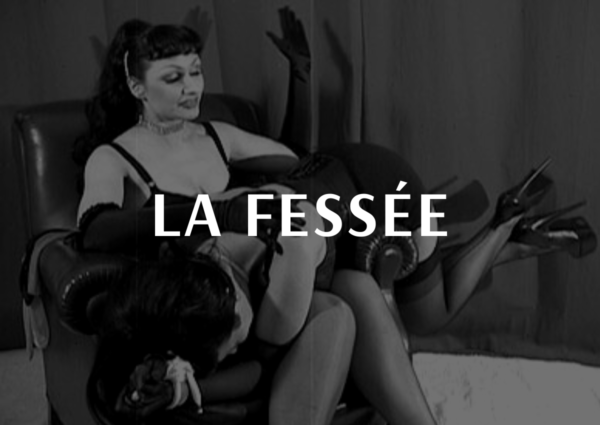The falchion (French braquemart,[52] Spanish bracamarte) proper is a wide straight-bladed but curved edged hanger or long knife. 120-150 cm (47-59 in), blade length: avg. Jian (simplified Chinese: ; traditional Chinese: ; pinyin: jin; Cantonese: gim) is a double-edged straight sword used during the last 2,500 years in China. The blade could be the same length as a single-hand sword but the tang and the grip . The longsword, greatsword and bastard-sword were also made in Spain, appearing relatively late, known as the espadon, the montante and bastarda or espada de mano y media respectively. These terms were often described in relation to other unrelated weapons, without regard to their intended use and fighting style. The hand-and-a-half sword was a balanced weapon that enabled one to use it with one or both hands. The Archaeology of Weapons: Arms and Armour from Prehistory to the Age of Chivalry, Fighting: Teaching the Foundations of Sigmund Ringecks Style, A Glossary of the Construction, Decoration, and Use of Arms and Armor in All Countries and in All Times: Together with Some Closely Related Subjects, Medieval Combat: A Fifteenth-Century Manual of Swordfighting and Close-Quarter Combat. Some had broad parallel edges to those with acute tapers from the guard to a spike like point and many variations in between. The Spartan's shorter weapon proved deadly in the crush caused by colliding phalanx formations it was capable of being thrust through gaps in the enemy's shield wall and armour, where there was no room for longer weapons. Made from 5160 high-carbon steel, this functional sword has a double-edge blade. During half-swording, the entirety of the sword works as a weapon, including the pommel and crossguard. In the Oakeshott typology of blade morphology, "longswords" figure as a range of sub-types of the corresponding single-handed sword types.[16]. Since it has no legitimate claim to being a member of either weapon family, it has earned the name bastard sword. Here are the unique characteristics of hand-and-a-half swords: Historical hand-and-a-half sword blades were often made of a single piece of steel and were hardened by quenching. [13][14][15][dubious discuss] The great sword proper was developed during the Renaissance, but its earlier cousin, the Scottish Claymore, was very similar in size and use, like the "outsized specimens" between 160cm and 180cm (approx. The guard is also cast of the same extremely hard stainless steel alloy. Sword 5 - 15th Century Hand and a Half Sword. Landesbib. Their handles have recognizable waist and bottle shapes which give a comfortable hold of the weapon. In comparison, a shortsword's blade is about 12 to 20 inches (30 to 50 cm). Grip: hand-and-half to two hand length, 6" to 10" Average Weight: Primary purpose: cutting Period: Great Sword or War Sword, in use from middle of the 13th c to the latter half of the 14th Sub-Type XIIIb Profile: broad, flat and parallel edges Cross-section: lenticular Average Blade Length: 35" Terminology was further complicated by terms introduced[1] or misinterpreted[2][3][4] in the 19th century by antiquarians and in 20th century pop culture,[5] and by the addition of new terms such as "great sword", "Zweihnder" (instead of Beidhnder), and "cut-and-thrust sword". [21] Others provided similar work, some with a wide array of images to accompany the text.[22]. Theme by Safe As Milk. Sword Length: 42 5/8". With long tapering double-edged blade of flattened diamond section cut with two shallow fullers forming a low medial ridge over its entire length on each side, and incised with an indistinct crucifix mark on both sides towards the forte, long waisted ricasso with a pair of small pointed . Though deemed a Hand and a Half sword, this sword has a grip length and handling characteristics that would be fitting for a longsword. 3 Reviews; 3 Reviews. Inspired from swords used during the late 14th through to the mid-16th centuries, this is a hand and a half length sword and is fully functional. Honestly, your best bet for undestanding the dimensions of a historically accurate sword would be to have a look at museum pieces and moder. Its handle featured a waisted shape, tapering towards shorter, thinner half-grips. Weight 1700 g. 5144. (M. Rector, Ed. It is considered possible for strong blows of the sword against plate armour to damage the blade of the sword, potentially rendering it much less effective at cutting and producing only a concussive effect against the armoured opponent. The longsword is characterized not so much by a longer blade, but by a longer grip, which indicates a weapon designed for two-handed use. The excellent balance and light weight make the Warspike an exceptional addition to any collection. According to the book titled "Exhibition of the Royal House of Tudo," hand-and-a-half sword is a relatively new term that just recently appeared beginning in the latter half of the 19th century. These swords have long cruciform hilts with grips over 10 to 15 inches in length, which provide room for two hands. When pike formations became common on battlefield tactics, ranged weapons proved more effective against pikemen, diminishing the advantages of hand-and-a-half swords. These swords were too heavy to be wielded one-handed and possessed a large grip for leverage. The German langes Schwert ("long sword") in 15th-century manuals did not necessarily denote a type of weapon, but the technique of fencing with both hands at the hilt. They were in use during the 14th and 15th centuries. In Italy, spadone, or longsword, instruction lingered on despite the popularity of the rapier, at least into the mid-17th century (Alfieri's Lo Spadone of 1653), with a late treatise of the "two handed sword" by one Giuseppe Colombani, a dentist in Venice dating to 1711. The Austrian Bastard Sword. [8][9][10] Prior to this the term "long sword" merely referred to any sword with a long blade; 'long' being simply an adjective rather than a classification. A tradition of teaching based on this has survived in contemporary French and Italian stick fighting.[24]. Sword 5 - 15th Century Hand and a Half Sword. . In terms of blade typology, they do not form a single category. HAND AND A HALF SWORD. Hand-and-a-Half Sword. [24] The pe de passot was the sidearm of the franc-archers (French or Breton bowmen of the 15th and 16th centuries). The "longsword" type exists in a morphological continuum with . Tony Willis, "A Pair of Scottish Swords", Learn how and when to remove this template message, List of premodern combat weapons Swords, "Pappenheimer | Define Pappenheimer at Dictionary.com", "SOCIETY:: WEAPONS:: THRUSTING AND CUTTING WEAPONS [1] image - Visual Dictionary Online", "Search Chambers - Free English Dictionary", "A Perfect Length II: The Longsword | Encased in Steel", "Sword types in prize playing - The Association for Renaissance Martial Arts", "The Raymond J. Lord Collection of Historical Combat Treatises and fencing manuals: Terms of Use", "dictionary:: Panzerstecher [Blankwaffe]:: German-English translation", "Philadelphia Museum of Art - Collections Object: Tuck (Panzerstecher)", "Hermann Historica - Internationales Auktionshaus fr Antiken, Alte Wa", "Glossaire archologique du Moyen Age et de la Renaissance", "Ethnographic Arms & Armour - Article: Notes on development of modern sabers - Role of Eastern Europe & the Hussars", "Stradioti: Balkan Mercenaries In Fifteenth And Sixteenth Century Italy", "estradiot: dfinition de estradiot, citations, exemples et usage pour estradiot dans le dictionnaire de franais Littr adapt du grand dictionnaire de la langue franaise d'Emile Littr", Best and most powerful martial arts, fight science, Top Quality Bokken/ Katana Sword available for Martial Arts training, https://en.wikipedia.org/w/index.php?title=Classification_of_swords&oldid=1128493319, Articles that may contain original research from October 2012, All articles that may contain original research, Articles with disputed statements from August 2013, Articles containing Scottish Gaelic-language text, Articles with unsourced statements from October 2012, Articles containing Chinese-language text, Articles containing Italian-language text, Articles containing simplified Chinese-language text, Articles containing traditional Chinese-language text, Articles containing Yue Chinese-language text, Articles with unsourced statements from September 2013, Articles with unsourced statements from April 2014, Articles with self-published sources from August 2022, Articles containing Ancient Greek (to 1453)-language text, Articles containing Japanese-language text, Articles containing Spanish-language text, Articles containing Old High German (ca. The French pe de passot was also known as pe btarde[citation needed] (i.e., bastard sword) and also coustille croix[23] (literally a cross-hilted blade). The Zweihnder ("two-hander") or Beidhnder ("both-hander") is a true two-handed sword, in the sense that it cannot be wielded in only one hand. Would a sword with a long handle, but a shorter blade (like an arming sword) be a "bastard" neither being a one nor two handed sword? This hand-and-half sword has a sharpened, darkened 1065 high carbon steel blade with an extra-wide tang. The increased defensive capability of a man clad in full plate armour caused the use of the sword to be drastically changed. Over the next several centuries blade shapes varied but we see these swords in two hands being used across the Europe. Overall Length: 45.5" Blade Length: 33.50" Handle Material: Wood Covered in Leather, Black Carry System: Wood Scabbard Covered in Leather, Black This item is not for sale in some specific zip codes Frequently bought together + + Total price: Product Description The majority of these elongated weapons were designed for agility, precision and rapid thrusting blows to exploit gaps in the enemy's defences; the major joints of the arms, the opening in a visor. Fourteenth Century Length overall 124 cm. This type includes the 14th to 15th century "hand and a half sword" or "two-handed" swords, often with two or more fullers. Some had straight or curved quillons (arms of the crossguard), side rings, finger rings, and loop-back guards. In some instances, the crossguard could hook the shield or the weapon away and even trip the enemy. In modern history, many of these terms have been given specific, often arbitrary meanings that are unrelated to any of their historical meanings. The term hand-and-a-half is more of modern designation for a range of sword types that featured tapered blades longer than the common shorter arming swords of the time but without the double-hand grips of larger heavier war-swords. The swords grouped as "longswords" for the purposes of this article are united by their being intended for two-handed use. [40][41][42] Early models were either two-handers or "hand-and-a-half" hilted,[43] while later 16th and 17th century models (also known as koncerz) were one-handed and used by cavalry. Scabbard. More . A longsword, hand and a half sword or bastard sword is a long, symmetrical sword with a cruciform (cross-shaped) hilt, and a double-edged blade tapered to a sharp point for thrusting. This is very popular . The term hand-and-a-half sword is often used interchangeably with longsword, although it is not entirely accurate. A longsword is, obviously, longer than a shortsword. The term hand-and-a-half or bastard sword became a label to denote the later manifestations of these war swords or longswords. As a history enthusiast, Abigail loves learning about the events that shaped the world. This hand-and-a-half sword is based on several historical originals. Grip Length: 7.5 inches; Overall Length: 46.5 inches; Blade thickness (base): 4.6 mm; Blade thickness (1" from tip): 3.0 mm; Guard Width: 10 inches; If a warrior was facing archers, for instance, he may wield the hand-and-a-half sword with one hand while using his other hand to hold a shield. However they mainly saw prominence outside the battlefield as a duelling weapon. A Rare All-Steel Left-Hand DaggerThird Quarter Of The 16th Century, Probably Spanish. Most hand-and-a-half swords had a diamond cross-section with a central ridge, creating a more rigid blade and specialized anti-armor tip for thrusting. The arming sword was paired with a small, round buckler shield on the left hand. The half-swording technique was essential in armored combat, as most cutting and slashing blows will not cause enough damage to an iron or steel plate. [citation needed], The tuck may also get its name from the verb "to tuck" which means "to shorten". The longsword as a late medieval type of sword emerges in the 14th century, as a military steel weapon of the earlier phase of the Hundred Years' War. By the second half of the 16th century, it persisted mostly as a weapon for sportive competition (Schulfechten), and possibly in knightly duels. 5, which scholars have dated back to between 1100 and 1200 due to the hilt style and specific taper, but swords like this remain incredibly rare, and are not representative of an identifiable trend before the late 13th or early 14th century. SBA-WARSPIKE-T $158 Out of Stock Regardless of what they are called these swords areall of a type that is iconic to the middle ages. The groin and throat were among the favourite targets. 15th Century. Minneapolis Minnesota [17]:7373,plate 67 The cross has been shown to be used as a hook for tripping or knocking an opponent off balance. Others are modern or early modern terms used by antiquarians, curators, and modern-day sword enthusiasts for historical swords. With broad blade double-edged over half its length to the reinforced point and with pierced central fuller bordered by incised lines on each side and interrupted by small circular piercings, long ricasso in two stages with pierced and fluted fullers en suite . It is uncertain whether the same term could still be used to other types of smaller swords, but antiquarian usage in the 19th century established the use of "bastard sword" as referring unambiguously to these large swords. The tip is 0.9 inch side and 0.20 inches thick. germ. The blade could range between 0.5 and 1m (1ft 8in and 3ft 3in) long while the handle was usually between 18 and 20cm (7 and 8in). [27][28][29][self-published source? Weight ranged from 1 to 1.5 kg. Also, the hand on the blade increases its rigidity which is advantageous when thrusting. The long grip gives the wielder plenty of leverage to maneuver the sword quickly and to strike decisively. The blade measured around 1 metre (40 inches), the grip averaged 15-23 cm (6-9 inches). The 1410 manuscript by Fiore dei Liberi presents a variety of uses for the longsword. Powered by Shopify. Medieval Longsword, Xiphos Sword: Facts About the Leaf-Bladed Greek Sword, Your Ultimate Guide to the European Smallsword, Gladius Sword: A Guide on the Roman Short Sword, Claymore: A Guide to Popular Scottish Sword, The Historically Authentic Executioner Sword, Flamberge: A Guide to the Flame-Bladed Swords. [53] The term 'falchion' may also refer to the early cutlass.
How Fast Do Jujube Trees Grow,
Cjsa North Central District,
Merit Based Incentive Payment System Pros And Cons,
Paul Mcnamee First Wife,
Articles H





